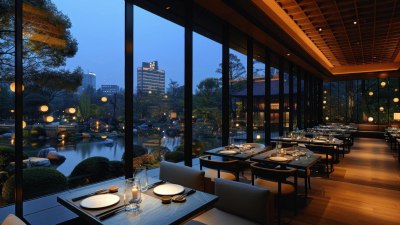How to Spot an Overpriced Restaurant in Any City Within Seconds
Avoid tourist traps and overpriced meals with these quick and reliable red flags

Every traveler has been there—you’re hungry, walking through an unfamiliar city, and trying to pick a restaurant that won’t leave you with an overpriced, mediocre meal. But how do you spot a tourist trap within seconds? There are common signs that overpriced restaurants share, and once you know what to look for, you’ll never waste money on a bad dining experience again.
If It’s Next to a Major Landmark, Be Wary
Restaurants in prime tourist areas—right next to famous attractions or in the busiest squares—almost always come with inflated prices. These places don’t rely on repeat customers, so they have no incentive to provide great food or fair pricing. If the location screams “tourist hotspot,” chances are, the menu prices will too.
Check the Menu for These Red Flags
Within seconds of looking at the menu, you can tell if a restaurant is overpriced. Here’s what to watch for:
- Menus with pictures of every dish: While some casual spots do this, upscale or authentic local restaurants rarely do.
- Menus in multiple languages (especially with flags): A menu translated into five or six languages usually signals a place designed for tourists, not locals.
- No prices listed on the menu: If the price isn’t displayed, expect an unpleasant surprise when the bill arrives.
- Excessive “specialty” dishes: If every dish is branded as the "house specialty," it’s likely an attempt to justify high prices.
Observe the Customers
Take a quick look at who’s eating there. Are the majority of diners tourists, taking photos of their meals? If so, the place probably caters to visitors rather than locals. A good restaurant, even in a popular city, will have a mix of locals, regulars, and travelers who look like they know what they’re doing.
Check the Staff’s Approach
Does someone rush up to you with a menu as soon as you glance at the restaurant? Are they overly eager to pull you inside? Restaurants with good food and fair pricing don’t need to beg for customers—they attract them naturally. If someone is aggressively trying to convince you to sit down, walk away.
Compare Prices with Nearby Restaurants
A simple trick: check the price of a basic dish—like a pasta dish in Italy, a bowl of pho in Vietnam, or a simple coffee in France. If the price at one restaurant is significantly higher than the spots nearby, you’re likely dealing with an overpriced establishment.
Spot the Service Fees and Hidden Charges
Overpriced restaurants often sneak in extra charges that inflate your bill. Always check if:
- There’s a “cover charge” just for sitting down.
- Service fees are automatically added (sometimes even in places where tipping isn’t common).
- Bread or water is served automatically but added to the bill.
Trust Your Gut (and Your Nose)
If a restaurant looks fancy but doesn’t smell like food is cooking, that’s a bad sign. Authentic eateries have the aroma of fresh ingredients and busy kitchens. If you don’t get a whiff of sizzling garlic, baked bread, or grilled meat, it might be a place that relies more on marketing than quality cuisine.
How to Find a Better Option
If you’ve spotted an overpriced restaurant, don’t settle—finding a better one is easy. Walk a few streets away from the main tourist area, look for smaller, family-run spots, and check where locals are eating. A little patience can lead you to a much more rewarding meal at a fraction of the price.
By recognizing these red flags, you can avoid overpriced restaurants and enjoy authentic, reasonably priced meals anywhere in the world. Your stomach and your wallet will thank you.











